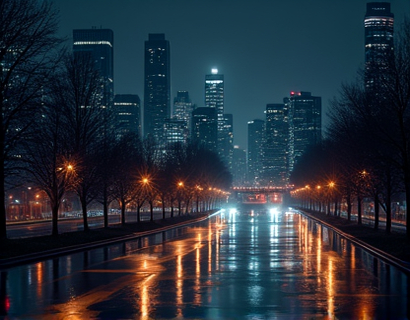Embarking on a Journey Through the Ancient Indus Valley: A Comprehensive Guide to Cultural Heritage, Historical Sites, and Travel Essentials
The Indus Valley, a cradle of one of the world's oldest civilizations, beckons travelers and history enthusiasts with its rich tapestry of cultural heritage and historical landmarks. Spanning across present-day Pakistan and northwestern India, this ancient region offers a profound glimpse into the lives of people who thrived over 4,000 years ago. This comprehensive guide aims to equip tourists and enthusiasts with the knowledge and practical tips needed to fully appreciate and explore the Indus Valley's timeless allure.
Understanding the Cultural Heritage
The Indus Valley Civilization, also known as the Harappan Civilization, is renowned for its advanced urban planning, sophisticated water management systems, and unique script that remains undeciphered. The cultural heritage of this region is a testament to the ingenuity and sophistication of its ancient inhabitants. Visitors can delve into the daily lives, religious practices, and trade activities of the Harappans through various archaeological sites and museums.
One of the most significant aspects of the Indus Valley culture is its urban planning. Cities like Mohenjo-Daro and Harappa exhibit a remarkable level of organization, with well-planned streets, drainage systems, and public baths. The Great Bath of Mohenjo-Daro, for instance, is an engineering marvel that suggests a deep understanding of hygiene and ritual purity. These sites offer a tangible connection to a civilization that was ahead of its time.
Exploring Historical Landmarks
Mohenjo-Daro, one of the largest and best-preserved cities of the Indus Valley, is a must-visit destination. The city's central public bath, the Granary, and the Citadel provide insights into the social and religious life of the Harappans. The Drainage System of Mohenjo-Daro is another highlight, showcasing the advanced engineering skills of the ancient builders. The city's scale and complexity suggest a highly organized society with a strong central authority.
Harappa, another key site, offers a different perspective on the Indus Valley Civilization. The site includes the Granary, a large public building that may have served as a storage facility or a community center. The Priest-King statue, discovered here, is an enigmatic figure that has sparked much debate among historians and archaeologists. The city's layout, with its grid-like streets and sophisticated drainage, further underscores the advanced nature of this ancient civilization.
Other notable sites include Kalibangan, known for its early evidence of wheel-made pottery and a well-planned citadel with a fire altarpiece, and Rakhigarhi, one of the largest Harappan sites that has been recently excavated. Each of these sites offers a unique window into the past, allowing visitors to piece together the story of a civilization that once flourished in this region.
Practical Travel Tips for Visiting the Indus Valley
Planning a trip to the Indus Valley requires careful consideration of several factors to ensure a smooth and enriching experience. Here are some essential tips for travelers:
First, the best time to visit the Indus Valley sites is from October to March, when the weather is mild and comfortable. Summers can be extremely hot, making outdoor exploration challenging. It's advisable to pack lightweight, breathable clothing, sunscreen, and a hat to protect against the sun.
Accommodation options range from budget-friendly guesthouses to luxury hotels, depending on your preferences and budget. Cities like Lahore and Multan in Pakistan, and Fatehabad in India, offer a variety of lodging choices. Booking in advance is recommended, especially during peak travel seasons.
Transportation is relatively convenient, with both domestic and international flights connecting major cities to the Indus Valley region. From the airports, taxis and local buses are available to reach the historical sites. For those preferring a more leisurely pace, guided tours are a great option, providing expert insights and logistical support.
When visiting the archaeological sites, it's important to respect the rules and regulations to preserve these historical treasures. Photography is often allowed, but flash photography is restricted to protect the delicate artifacts. Bringing a reusable water bottle and staying hydrated is crucial, as the climate can be harsh.
For a deeper understanding of the Indus Valley Civilization, visiting museums such as the National Museum in New Delhi or the Provincial Museum in Lahore is highly recommended. These institutions house a vast collection of artifacts, including pottery, tools, and jewelry, offering a comprehensive view of daily life in the ancient Indus Valley.
Hidden Gems and Local Attractions
Beyond the well-known sites, the Indus Valley region is home to several hidden gems that offer a more authentic and off-the-beaten-path experience. One such place is the Cholistan Desert, a vast sandy expanse that was once part of the Indus Valley. The desert's unique ecosystem and the traditional lifestyle of the local nomadic tribes provide a stark contrast to the ancient urban centers.
The town of Bahawalpur, with its rich history and cultural heritage, is another hidden gem. The Bahawalpur Museum and the Badshahi Mosque are must-visit attractions, offering insights into the region's royal past. The annual Bahawalpur Festival, celebrating the region's culture through music, dance, and traditional crafts, is a highlight for visitors.
For nature enthusiasts, the Sutlej-Indus Wetland Park in Pakistan is a haven for birdwatchers and nature lovers. This protected area is home to a diverse array of bird species and offers a peaceful escape from the hustle and bustle of city life. The park's scenic beauty and tranquil atmosphere make it a perfect spot for a relaxing day trip.
In India, the city of Lothal, known for its ancient dockyard, provides a fascinating look at the maritime capabilities of the Indus Valley Civilization. The Lothal Museum and the nearby Adhanara Hill offer a blend of history and natural beauty, making it a worthwhile detour for any Indus Valley traveler.
Essential Resources for Travelers
To make the most of your journey through the Indus Valley, here are some essential resources to consider:
- Guidebooks: "The Indus Civilization" by Jonathan Mark Kenoyer and "Indus: Ancient Cities of Pakistan" by J. P. Joshi provide comprehensive overviews of the civilization and its sites.
- Online Resources: Websites like the Archaeological Survey of India and the Pakistan Archaeology Department offer detailed information on the historical sites and ongoing excavations.
- Travel Forums: Platforms such as TripAdvisor and Lonely Planet's Thorn Tree Forum are valuable for gathering tips and advice from fellow travelers.
- Local Guides: Engaging a local guide can enhance your experience by providing context and insights that are not readily available in guidebooks.
These resources, combined with a sense of curiosity and respect for the ancient culture, will ensure that your visit to the Indus Valley is both informative and unforgettable.










































